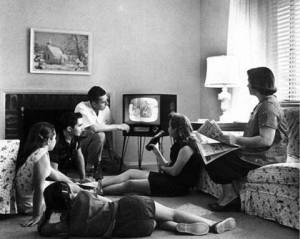 In recent years behavioral marketing has joined product placement marketing in TV programming. Will this tactic follow into movies and other forms of electronic entertainment as well? It remains to be seen, but the answer is more than likely yes depending on whether there is a good fit between the marketer’s product and the film’s plot or video games theme. The bottom line is with so many new ways to reach audiences (and with much of the audience being fragmented) marketers will have to continue to find new and inviting ways to sway consumer behavior that is favorable to their product or service.
In recent years behavioral marketing has joined product placement marketing in TV programming. Will this tactic follow into movies and other forms of electronic entertainment as well? It remains to be seen, but the answer is more than likely yes depending on whether there is a good fit between the marketer’s product and the film’s plot or video games theme. The bottom line is with so many new ways to reach audiences (and with much of the audience being fragmented) marketers will have to continue to find new and inviting ways to sway consumer behavior that is favorable to their product or service.
A recent Wall Street Journal article focused on NBC Universal’s programming that includes behavioral placement – which “is designed to sway viewers to adopt actions they see modeled in their favorite shows. And it helps marketers who want to associate their brands with a feel-good, socially aware show.†So viewers of 30 Rock and The Office will see familiar characters being good stewards of the environment by recycling and doing things in a matter of fact way that tends to resonate with viewers. The article goes on to state that “the more seamlessly integrated the behavior is, the less it feels like the show is trying to manipulate.â€
In some ways behavioral marketing may appear as new a fad. When marketers try to do something that they hope will be the next “hip and/or cool†trend the audience will often become cynical about the effort unless it seems genuinely real and original. The WSJ article continued by stating that NBC incorporates messages “that tend to be fairly innocuous… [and] the trick is not to turn off viewers by being lectury or too obvious…â€
One could also compare behavior marketing to sponsorship marketing – being that it connects its product to a sport. Red Bull is a master of attaching its product to extreme sports and is always present in the background when the athletes are snowboarding, skate boarding or surfing or whatever. The Red Bull logo is always present and strategically placed in every frame. It’s a familiar set of tactics that has been around for decades, but Red Bull does it exceptionally well. Does this blatant logo placement turn off the fans of these sports? No, because the target audience understands and appreciates the connection and are aware that the sponsors pay the athletes and event organizers huge sums of money. (A position several aspiring wannabe athletes/couch fans would love to be in.)
So what about behavioral marketing? Can it be used in a similar fashion? Could for instance someone as famous as Shaun White be persuaded by a group of  marketers to be seen casually recycling (or just acting in a manner that is environmentally conscious) on the street, at his house or when on the slopes? It may be also wise to have the rest of Mr. White’s competitors also casually follow this behavior (but never over the top). As noted in the WSJ article, marketers and advertisers will then gravitate towards an attitude and a behavior that falls in line with their products and will therefore be more inclined to be associated with these activities.
The idea is to incorporate behaviors in such a way that it just seems natural and barely noticeable. Wearing seat belts, turning off lights when leaving a room or automatically inserting ear buds when heading out for a run are behaviors that many people do– so why not market it as a behavior? If we see a character on a popular TV show board a plane and automatically put on their noise-canceling headphones will the audience see that as the norm? And will we make the connection when during the commercial break, low and behold, there is a spot for Bose headphones?
Are marketers are being too manipulative? Possibly, but the fact is we are so saturated with blatant messages, that it seems inevitable that behavior marketing will be expanded into every facet of our online, TV and film viewing and consumer experience.